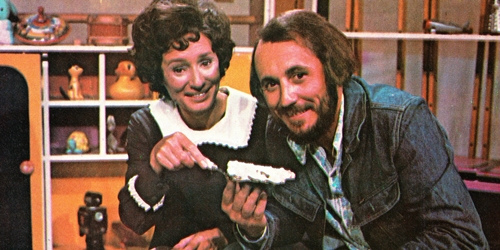
Concluding this week’s countdown of the top 60 shows from Australian television over 60 years. See also Part I, Part II, Part III, Part IV and Part V.
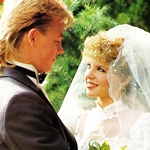 10. Neighbours (Seven/Ten/Eleven, 1985-)
10. Neighbours (Seven/Ten/Eleven, 1985-)
Neighbours was set to be one of Australia’s shortest lived soaps, being axed by the Seven Network only six months after its launch. But producer Reg Grundy‘s faith in the concept saw him do the unthinkable and sell the idea to rival Network Ten, which proceeded to turn Neighbours into a global success story. At its peak it was showing in over 50 countries and turned teenage unknowns like Jason Donovan and Kylie Minogue (pictured) into international stars. The show’s ratings are a long way down from those heady days of the ’80s but it still plays to a considerable audience in the United Kingdom and to a small but loyal fan base in Australia.
9. The Mavis Bramston Show (Seven, 1964-1968)
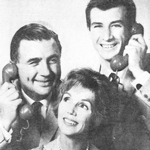 Inspired by British comedy series That Was The Week That Was, The Mavis Bramston Show was a topical revue that poked fun at all manner of topics. After its launch in Sydney it became a huge hit nationally, with the series winning a TV Week Logie in 1965 for Best New Show and cast member Gordon Chater winning the Gold Logie in 1966. With the ensemble of Chater, Carol Raye and Barry Creyton (pictured) supported by a cast of regulars, The Mavis Bramston Show showed that Australian viewers were happy to have a laugh at themselves and triggered a boom in Australian comedy on television.
Inspired by British comedy series That Was The Week That Was, The Mavis Bramston Show was a topical revue that poked fun at all manner of topics. After its launch in Sydney it became a huge hit nationally, with the series winning a TV Week Logie in 1965 for Best New Show and cast member Gordon Chater winning the Gold Logie in 1966. With the ensemble of Chater, Carol Raye and Barry Creyton (pictured) supported by a cast of regulars, The Mavis Bramston Show showed that Australian viewers were happy to have a laugh at themselves and triggered a boom in Australian comedy on television.
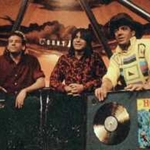 8. Countdown (ABC, 1974-1987)
8. Countdown (ABC, 1974-1987)
Launching at a time when Australian TV was about to burst into colour, Countdown epitomised the booming pop music scene of the 1970s. An appearance on Countdown, and some words from presenter Ian ‘Molly’ Meldrum (pictured far right), could make or break a hit song or influence radio station playlists. Although it had an emphasis on live (albeit mimed) performances, Countdown also created an appetite for music video clips which were a rarity in the beginning but it was the growth in the access and production of video clips that eventually brought Countdown down a decade later. Other shows tried to emulate Countdown‘s success but it was a one of a kind and Meldrum, though far from being a polished presenter, has become a national icon and was recently the subject of a mini-series.
7. Play School (ABC, 1966-)
Another Australian production adapted from a foreign concept. After three months of showing the BBC series of the same name, ABC started its own version of Play School. Generations of Aussie kids grew up with its songs and games, and actors and performers would vie for a presenting role to add to their CV. Depending on how old you are, you might recall presenters like Anne Haddy, Lorraine Bayly, John Waters, Benita Collings, Jan Kingsbury, John Hamblin, Noni Hazlehurst, Don Spencer and Alister Smart (pictured up top with Collings) or later names like Monica Trapaga, George Spartels, Justine Clarke, Alex Papps, Deborah Mailman, Andrew MacFarlane or Rachael Coopes.
6. Fast Forward (Seven, 1989-1992)
Following the success of The Comedy Company, Fast Forward upped the ante in terms of production values. Its mocking of television, movies, politics, advertising, pop music and the then recession created some iconic parodies of its own — including but not limited to: the SBS lady and Jana Wendt (Marg Downey); Pixie-Anne Wheatley, Chenille, Joan Kirner and Mary MacGregor (Magda Szubanski); Darren Hunch (Steve Vizard); the gay flight attendants (Vizard and Michael Veitch); Bob and Cheryl Ugly (Peter Moon and Szubanski); Sveta and Viktor (Jane Turner and Moon); Michelle and Ferrett (Szubanski and Alan Pentland); the Queen (Gerry Connolly); Kerri-Anne Kennel and Eleanor LaGore (Gina Riley); and the cast of soap send-up Dumb Street.
YouTube: Classic Aussie Comedy/Fast Forward
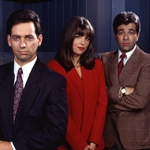 5. Frontline (ABC, 1994-1997)
5. Frontline (ABC, 1994-1997)
Frontline was a satirical look at the workings of a current affairs program, uncovering some of the tricks and manipulations employed by producers, hosts and reporters in getting a current affairs program to air and at the expense of the opposition. The characters and events depicted were often thinly disguised parodies of real life people and situations. Such was the impact of Frontline that it soon became a text for school studies in media. Twenty years later much of what was depicted in Frontline would still ring true in television production today.
4. Four Corners (ABC, 1961-)
From modest beginnings 55 years ago, Four Corners has become one of our most important outlets of journalism. Even in its earliest days the program was having an impact in bringing issues to the mainstream. Just weeks after its debut its report on the conditions being faced by the indigenous community in a country NSW town caused a public outrage. In the years that have followed, Four Corners has uncovered cases of corruption, abuse and injustice with compelling detail. Its recent report on the systematic abuse of indigenous children in a youth detention centre in Darwin has led to a royal commission. The program has been recognised with national and international awards for excellence in journalism.
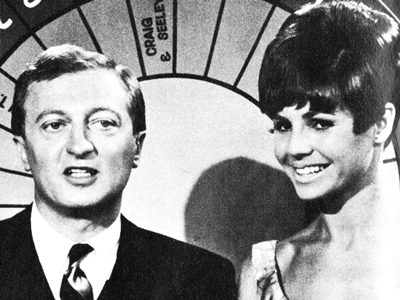
3. In Melbourne Tonight (Nine, 1957-1970)
Television was only a few months old when a shy radio announcer by the name of Graham Kennedy was appointed the host of GTV9‘s new nightly variety show, In Melbourne Tonight. Originally intended as an interview program, loosely based on the American Tonight Show concept, the show soon developed more in the area of variety performances, comedy skits and live commercials. Kennedy’s sense of comedy and his rapport with supporting cast such as Bert Newton, Geoff Corke, Joff Ellen, Patti McGrath, Philip Brady, Rosie Sturgess and the show’s various barrel girls (including Honni Van Den Bosch, pictured above with Kennedy) made IMT almost essential viewing for Melburnians for over a decade. Although as many as 50 presenters occupied the host’s chair at IMT at one time or another over its 13 years, it was always Kennedy’s show. IMT and Kennedy won multiple Logies for their popularity and Kennedy was soon dubbed the King of Australian Television. It is a title that nobody has dared or wanted to challenge ever since. IMT‘s success led the way for a long tradition of live variety from the Nine Network, particularly at Melbourne’s GTV9, and for Kennedy to go on to other success in both film and television. Blankety Blanks and Graham Kennedy’s News Show were similar success stories in the 1970s and 1980s respectively. Kennedy, who named the Logies after TV inventor John Logie Baird, won five Gold Logies over 20 years and won another when inducted into the TV Week Logies’ Hall Of Fame in 1998.
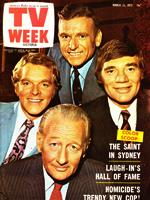 2. Homicide (Seven, 1964-1977)
2. Homicide (Seven, 1964-1977)
Homicide wasn’t our first television drama but it was the first to demonstrate that locally-produced drama can be compelling and popular with an audience generally accustomed to a dominance of American or British imports. Viewers tuned in overwhelming numbers to watch stories being told from our own familiar backdrops and with our own accents. The show’s attention to production values and thorough research and detail, often with the assistance of Victoria Police, set the standard for Australian television drama, and its success led to a boom in local production and significant opportunities for actors and crew in the still relatively new medium of television. Homicide told stories of significant social issues, such as rape, prostitution and drug abuse, and highlighted some of the dangers faced by our police forces. The success of the series created a production empire for producer Hector Crawford, with more police and crime dramas to follow, including Division 4 and Matlock Police. Generations of actors and production crew still to this day owe their careers to this one program, not just directly but through the industry and culture that it created.
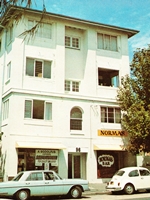 1. Number 96 (Ten, 1972-1977)
1. Number 96 (Ten, 1972-1977)
Number 96 was a ground-breaking series and a success on multiple levels. It proved that Australian serial drama, or soapies, can be a viable production and reach a mass audience. Its debut forever became known as ‘the night Australian television lost its virginity’, as Number 96 told the adults-only story of the residents of a Sydney apartment block. It liked to shock and titillate, even if tame by today’s standards, as well as depict humour and the importance of community. Its characters represented a mix of cultural and sexual diversity at a time that society itself was going through rapid change. The series’ depiction of homosexual characters, in a manner of utmost normalcy and without derision, was a first for Australia and quite possibly the world. All manner of storylines and situations were played out, including stories of rape, murder, drug addiction, domestic violence, racism, cancer and child abduction, and its cliffhangers were legendary. With the show hitting top of the ratings, its stars became heroes of the small screen and their attendance at public events attracted crowds not seen since The Beatles came to Australia a decade earlier. The show’s immense and immediate popularity, with children as well as adults, essentially rescued the financially-troubled 0-10 Network and completely re-shaped viewing habits to the network against its older rivals. The series won four consecutive Logies for Best Drama, and scored a Gold Logie for actress Pat McDonald in 1974. Any soapie or serial drama that has followed in the history of Australian television contains elements and production styles that many first saw in Number 96.
YouTube: SilentNumber96
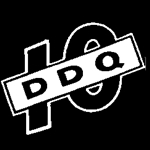
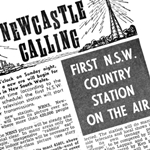
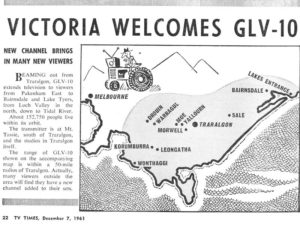
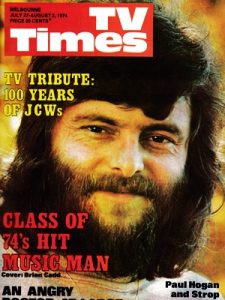
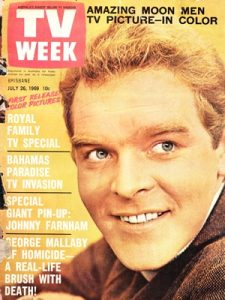
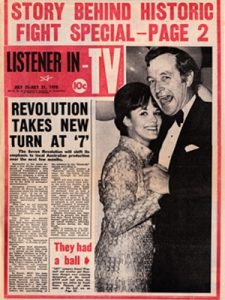
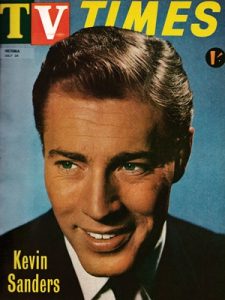
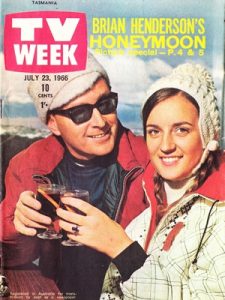
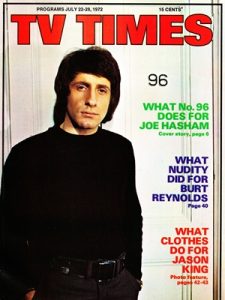
So many shows that should have made this list far ahead of so many others. 4 shows that should have been Top 20 were not even in the so called top 60.
Power Without Glory, Leaving of Liverpool, Phoenix and Blue Murder. The ABC has always made the superior drama series. I could also add “The Fourth Wish”(not the movie), “The Outsiders”, “The Alien Years”, “Janus” and even both “Miss Fisher” and “Doctor Blake”